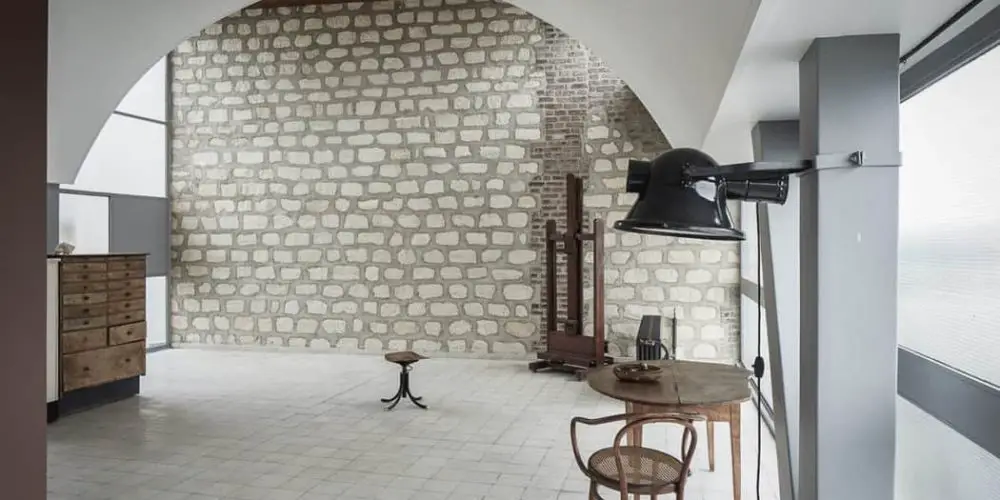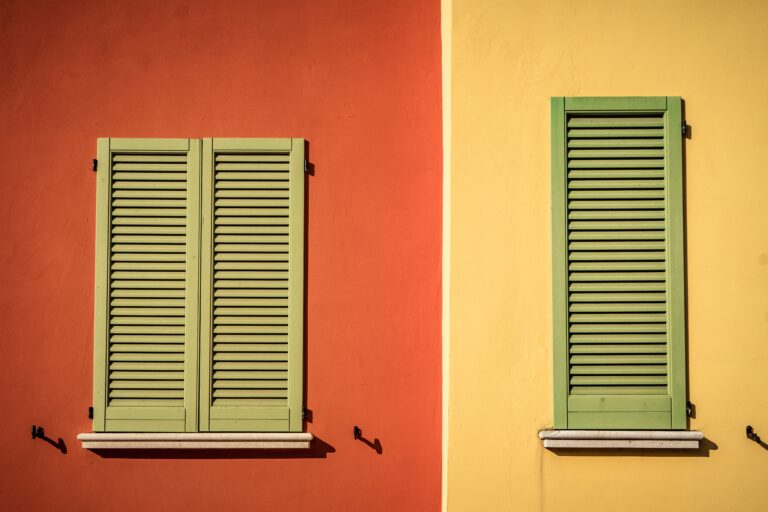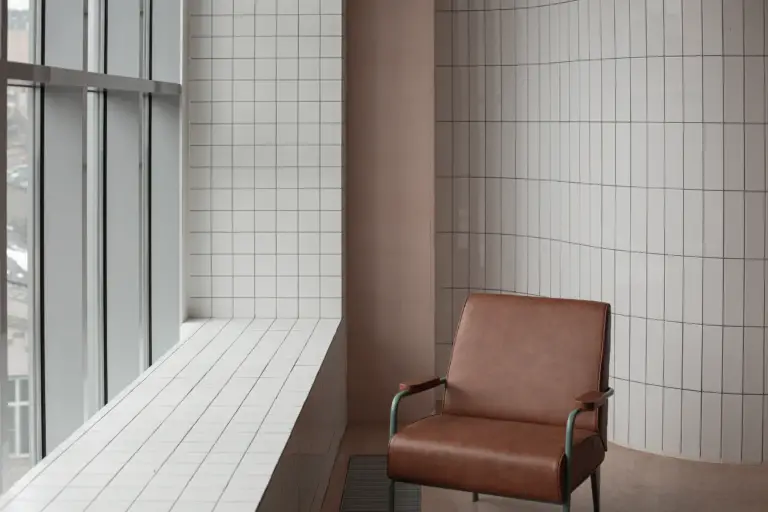After a two-year restoration, Le Corbusier’s Parisian studio has reopened to the public. The Parisian apartment was home to the architect and his wife Yvonne Gallis from 1934 until his death in 1965.
French architect François Chatillon has brought back the original color palette and textures of the 240 sqm Modernist home as well as replacing degraded materials.
Listed as a UNESCO world heritage site in 2016. Le Corbusier’s restored apartment at Rue Nungesser et Coli 24, can be visited on Mondays, Tuesdays, and Saturdays.
LE CORBUSIER | BIOGRAPHY
Le Corbusier -Charles-Édouard Jeanneret; La Chaux-de-Fonds, 1887 – Cap Martin, 1965- was a French architect of Swiss origin that was on of the main protagonist of the international architectural renaissance of the 20th century.
In addition to being one of the greatest innovators of modern architecture, Le Corbusier was a tireless cultural agitator, a task he carried out with passion throughout his life.
With an artisan background, he built his first house at the age of seventeen. He then learned from the best architects of his time: Joseff Hoffmann, Auguste Perret, and Peter Behrens. In 1919 he founded together with Amadée Ozenfant, the Purism, a derivation of Picasso and Braque’s cubism. He had also created a magazine, L’Esprit Nouveau, from which he launched his proclamations against the School of Fine Arts.
In 1921 Le Corbusier published an article in which he set forth an entirely new concept of housing. The house had to be a “living machine” and be homologated to the rest of the goods that make up the technological society. In doing so, he did not defend aesthetics or the machine spirit but tried to make a house as functionally efficient as the machines were in the tasks for which humans have invented them.
Modern life brought with it a series of demands whose satisfaction was impossible to find in the survival of traditional architecture; that’s why architecture had to be adapted to the civilization that emerged from the industrial revolution. “We like the pure air and the sun in abundance -The house is a living machine, bathrooms, sun, hot and cold water, temperature adjustable at will, food preservation, hygiene, beauty through convenient proportions. An armchair is a sitting machine… toilets are washing machines… The world of our work has created its things: the clothes, the fountain pen, the razor, the typewriter, the telephone… the limousine, the steamer, and the airplane”.
It was, therefore, necessary to create a new architecture as well. Le Corbusier founded it around five essential points: the use of pilotis (supporting elements), roof gardens, open conformation of the plants, continuous windows, and free formation of the facade, all within a strict geometric order as the only generator of “pure volumes.” These solutions would become the fundamental and paradigmatic characteristics of architectural rationalism.
Le Corbusier’s utopia was to create a new urban reality, a city that would synthesize nature and technological development. To do this, architecture and urbanism had to be perfectly integrated. Le Corbusier conceived urbanism as the interaction of the space of civilization in the space of nature. His ideal city, designed in 1922, is built vertically, leaving large land surface areas free, which become green areas to run underneath the buildings. These are raised on pilotis, leaving the first floors as open communication spaces. The roofs, converted into gardens, are no longer useless spaces; the streets are broad, and the traffic is organized in large roads of rapid circulation, clearly separated from the pedestrian areas.
In the face of the chaos of large urban centers, unable to absorb the unstoppable accumulation of vehicles and people, Le Corbusier dreamed of a city of skyscrapers connected by gardens and highways. Still, his dreams were only of paper and, although he projected dozens of towers, he never built any. In the 1920s, he designed and constructed Ville Savoye (1928-1929, Le Possy), a magnificent example of Corbusier’s rationalism. A house supported by pilotis, related to the exterior through large windows and connected interior spaces.
In the period of reconstruction following the Second World War, Le Corbusier devised a city structured in unités d’habitation, modular elements of new urban development. His idea was to build large apartment buildings equipped with the necessary services to become self-sufficient units. His dream found a fragmentary realization in the Unité d’habitation de Marseille (1947-1952).
The building soon became known in Marseille as “the house of the madman” and received numerous criticisms. Despite the many shortcomings that the reality of the building’s operation made evidently, it was the model of a new architecture for a whole generation of architects, and many of his ideas would become commonplace in later construction. Le Corbusier continued to improve the project throughout his life. However, only one other Unité d’habitation was built in Nantes and a last one in Firminy, designed by Le Corbusier in the same year of his death.
Le Corbusier made urban plans for many cities, including Paris (1925), Algiers (1931), Barcelona (1932), Stockholm (1933), and Saint Dié (1945). In the Letter from Athens (1943), his most important writing with Toward an Architecture (1923), Le Corbusier enunciated the general principles that would inspire the new trends of modern urbanism. Among them, the idea of open buildings stands out, as contrary to the planning based on closed blocks, allow the concentration of high-rise housing to leave large open spaces to be occupied by gardens. Besides, Le Corbusier advocated the city’s sectionalization, dividing it into specialized areas (commercial, administrative, recreational). Other architects have built this idea of the city on the outskirts of large cities. However, often these realizations are nothing but gross trivializations of Le Corbusier’s fantastic utopia.
Ruiza, M., Fernández, T. y Tamaro, E. (2004). Biografia de Le Corbusier.







